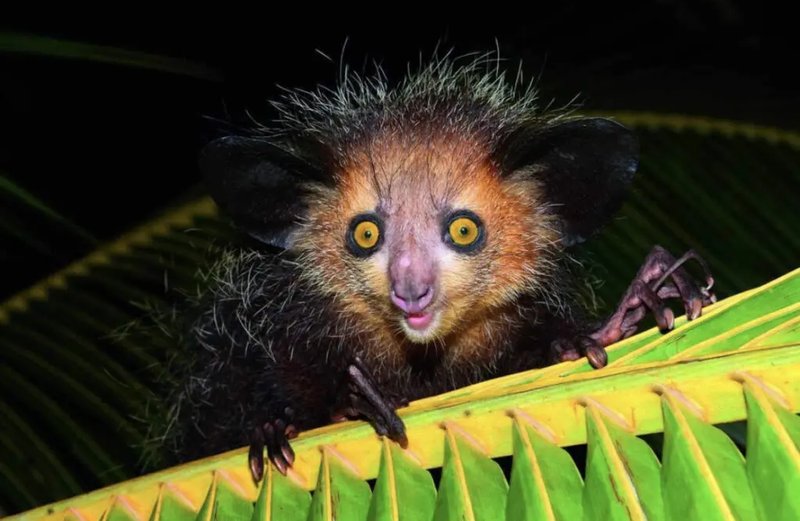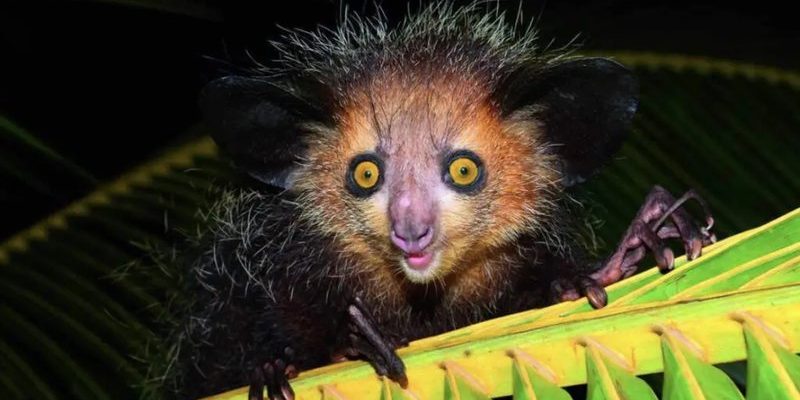
Many myths have sprung up around the aye-aye, often leading to misunderstandings and even fear. It’s a bit like a game of telephone—by the time information travels from one person to another, the original meaning is lost. Today, let’s debunk some of the most common myths and misconceptions about the aye-aye. This way, you’ll have a clearer view of who they really are and what they contribute to their ecosystem.
The Aye-Aye Is Not a Rodent
One of the biggest misconceptions surrounding the aye-aye is that it’s a type of rodent. You might be surprised to hear that it actually belongs to the lemur family, which is part of a group known as prosimians. Think of prosimians as the ancient relatives of monkeys and apes. Unlike rodents, which typically have continuously growing incisors, aye-ayes have different dental structures. Their teeth are adapted for their unique diet, which primarily consists of insects, particularly wood-boring larvae.
So, how did this misconception start? Part of it may stem from the aye-aye’s peculiar way of foraging. They tap on trees to listen for hollow sounds that indicate the presence of larvae, using their long, thin middle finger to extract their snack. This tapping behavior can resemble how some rodents gnaw at wood. But once you learn a bit more about their biology, it’s clear they are far from being rodent-like.
The Aye-Aye Is NOT a Harbinger of Bad Luck
In Madagascar, there’s a prevalent myth that the aye-aye brings bad luck or is an omen of death. This superstition has led to the unfortunate persecution of these primates, often resulting in their deaths purely out of fear. The truth is, like many animals, aye-ayes are simply trying to survive in their native habitat. They play an essential role in the ecosystem by helping control insect populations, especially by eating pests that can damage trees.
Here’s the thing: every creature has its place in nature. The aye-aye contributes to a healthy ecosystem, just like bees pollinate plants or how wolves help keep deer populations in check. Fear and misunderstanding can lead to irrational beliefs, and it’s crucial we replace those views with knowledge and understanding.
Aye-Ayes Are Not Vicious Creatures
Some folks picture the aye-aye as a fierce, aggressive animal, but that couldn’t be further from the truth. Sure, they have sharp teeth and long fingers, but their appearance is a far cry from their actual behavior. Aye-ayes are mostly shy and nocturnal, preferring to stay hidden in the trees during the day. In fact, when they feel threatened, they often freeze rather than lash out.
It’s easy to misjudge an animal based on its looks. Think about how some people might find a rat scary, even though most rats are harmless. The aye-aye’s odd features can provoke concern, but remember that their main goal is to find food and avoid conflict, just like we do.
The Aye-Aye Is NOT an Endangered Species
While the aye-aye is not currently classified as endangered, it faces threats to its habitat, mainly due to deforestation in Madagascar. You might be wondering why this matters. Healthy populations of aye-ayes are crucial for maintaining ecological balance in their environment. They help by dispersing seeds and managing insect populations, creating a more resilient ecosystem.
Let’s be clear, though—while they are not on the endangered list, their habitat is shrinking at an alarming rate. Preservation efforts are vital, ensuring that future generations can enjoy these unique creatures. Organizations are working hard to protect the aye-aye and its habitat through conservation programs, education, and raising awareness about the importance of biodiversity.
Aye-Ayes Are Not Solitary Creatures
You might picture an aye-aye climbing alone through the trees, but they actually have social behaviors that are often overlooked. While they are primarily solitary when foraging, they do gather for social interactions, especially during mating season. Males and females communicate through a range of vocalizations and scent markings, which help them establish territory and attract mates.
There’s something to be said about the social dynamics of aye-ayes. Think of them as the introverted friends in a group—happy to keep to themselves but still enjoying the company of others when the time is right. This social aspect can often get lost in the misconceptions surrounding their behavior.
They Can’t Cause Human Illness
Another misconception is that aye-ayes can transmit diseases to humans. While it’s true that all wild animals can carry some pathogens, the risk of contracting a disease from an aye-aye is minimal. In fact, the chances of interacting with one in the wild are quite low, as they are elusive and typically avoid human contact.
In the grand scheme of things, it’s wise to respect wildlife and maintain a safe distance from all wild animals. This helps protect both humans and the creatures themselves, as encroaching on their territory often leads to negative consequences. The aye-aye isn’t a threat; it’s just a unique part of our planet’s rich tapestry of life.
The aye-aye is a quirky, misunderstood creature that deserves our respect and curiosity, not fear. By debunking these common myths and misconceptions, we can foster a deeper appreciation for this fascinating primate and its role in our ecosystem. Understanding the truth about the aye-aye not only helps us appreciate its uniqueness but also reminds us of the beauty of biodiversity.
As we continue to learn more about such incredible creatures, we’re better equipped to advocate for their protection and ensure their place in the world for future generations. Let’s celebrate the aye-aye for what it truly is—a remarkable testament to the wonders of evolution and the intricate web of life on Earth.

